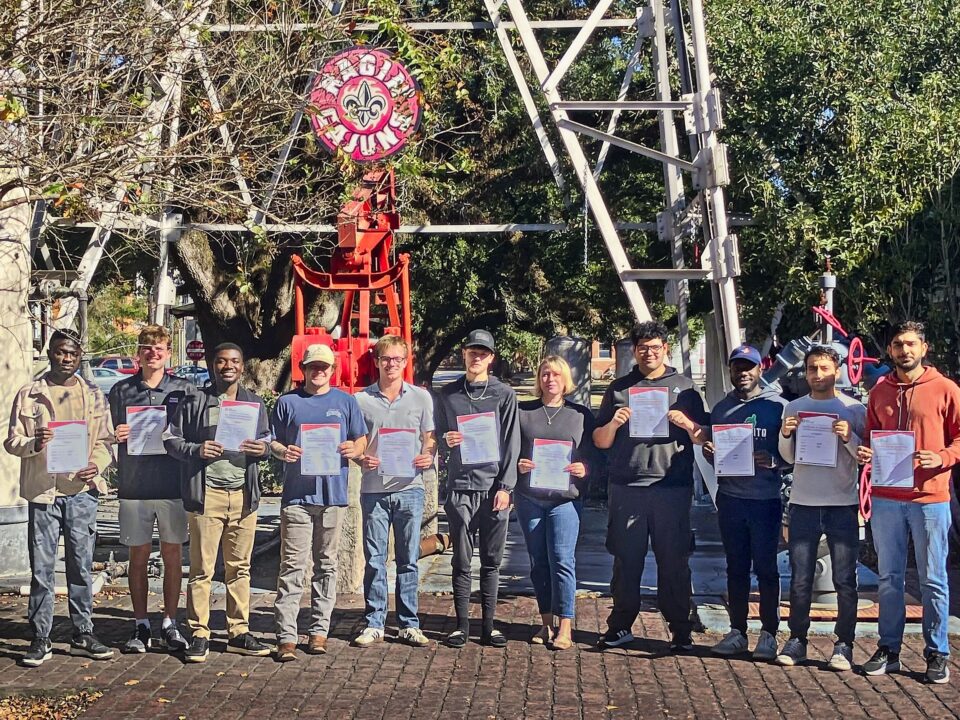Agenda
08.30-08.35 Welcome – Matt Isbell, DEC Chairman, Hess; facility and safety briefing – Corva; introduction to event – Alistair Charlton, DEC Board member
08.35-09.00 “Software Tools to Support RTOC: Industry Trends,” William Fox, Corva
There is a current industry trend for more consolidation of decision making, personnel and process into Real Time Operating Centers (RTOCs). The presentation will touch on common themes in the industry around what tools are required to enable RTOCs to successfully manage drilling and completions remotely and what cross discipline workflows are most common. Examples include well planning, geologic team integration, field data acquisition – what role will AI, both GenAI and machine learning, play in future RTOCs.
09.00.09.25 “Unifying Real-Time Geology and Drilling: Driving Optimization and 100% In-Zone Placement,” Chris Hixson, ROGII
A platform that unifies real-time geology with real-time drilling data is closing a critical gap in how wells are drilled and managed. Traditional workflows force drilling engineers and geologists to operate in different measurement domains, slowing decision making and creating blind spots in performance analysis. By synchronizing geosteering interpretations in true vertical thickness (TVT) with drilling parameters in real time, ROGII enables every stakeholder—geologists, engineers, directional drillers and rig crews – to work from the same live roadmap in a customizable view. Instead of reacting to problems, teams proactively adjust drilling parameters to sustain peak performance. Looking ahead, the convergence of geology and drilling on one platform establishes a new standard for real-time operations centers.
09.25-09.50 “Next-Gen RTOCs: Patented AI-Powered Remote Execution,” Amir Galaby, DRaaS Command
DRaaS Command transforms real-time centers from passive monitoring rooms into active execution hubs, powered by AI, sensors, & expert pods that directly run drilling operations.
Real-time centers have long been used to monitor, advise, & troubleshoot, but they often fall short when it comes to direct execution. Drilling Remote as a Service (DRaaS) moves beyond passive oversight by giving expert pods full authority to run drilling operations remotely. Each pod, made up of a Company Man, Drilling Engineer, & Directional Driller, manages multiple rigs in real time, backed by oversight engineers to ensure consistency & safety.
The backbone of this model is the Nvicta AI platform, proven on 214 wells, which aggregates rig-level data into a single environment & applies real-time physics modeling, machine learning optimization, and agentic AI guidance. This enables predictive decision-making, drilling parameter tuning, automated reporting, & vendor benchmarking at a speed & scale traditional centers cannot match. Integrated sensors & remote surveillance further extend visibility, reducing site travel & HSE exposure.
The value is clear: 56% manpower cost reduction & more than $200K/well savings through improved drilling efficiency & mud management. DRaaS will present real-world results & show how the industry can evolve real-time centers into fully enabled execution hubs, driving safer, consistent, and cost-effective drilling operations global
09.50-10.15 “The Rise of Real-Time Operating Centers,” Anton Makarov, Altitude EP
A look at how modern RTOCs have evolved from passive monitoring hubs to active operational partners. Altitude’s integrated ROC model demonstrates how real-time data, AI-assisted analysis, and lean communication structures are reshaping decision-making and drilling efficiency at the wellsite.
10.15-10.40 Networking break
10.40-11.05 “Remote Operations as an Extension of the Rig: An Integrated Contractor-Service Model,” Blair Paul, Nabors
As drilling becomes more complex, the traditional lines between drilling contractors and service providers are converging. Nabors is uniquely positioned as both a contractor operating a global rig fleet and a provider of advanced automation systems. This dual role enables an integrated approach where operations centers are used not only to optimize execution but also to accelerate continuous improvement in the technologies that support it. The Remote Operations Center (ROC) functions as an extension of the rig, providing scalable oversight across multiple operations. It combines process automation with human expertise to standardize performance and enhance safety. Automated task sequencing, including back to bottom workflows, connection practices, and slide execution reduces variability and delivers consistent results. Directional guidance systems enforce trajectory rules and improve the quality and speed of decisions, ensuring efficient and repeatable outcomes across crews and pads.
The ROC is organized around two complementary domains. The first focuses on steering, reviewing surveys, generating and approving trajectory instructions, and coordinating downlinks within defined rulesets. The second manages process automation and performance optimization, refining digital “recipes” for rig activities, supervising closed loop controls during execution, and monitoring for dysfunction or inefficiencies.
11.05-11.30 TBD, Stephen Simmons and Michael Richardson, ProDirectional
11.30-11.55 “West Minerva: Driving Safer, Standardized and High-Performing Offshore Operations,” Richard McConomy, Seadrill
In December 2024, Seadrill launched a POC for the West Minerva RTOC within our Operations Excellence group. The goal: enhance safety and performance by embedding analytics, standardization, and best practices across our deepwater fleet. Decision-making remains with the rig – Minerva acts as a support function, ensuring offshore teams retain control while benefiting from timely expertise. The POC also aligned with Seadrill’s “Focus on the Bit” strategy, reinforcing our commitment to efficiency and safety where it matters most. Powered by PLATO, Seadrill’s data aggregation and analytics platform, Minerva delivers a single source of truth. Teams can proactively monitor activity, identify risks early, and provide data-driven support during critical operations.
By embedding proven practices into standardized workflows, the RTOC ensures safer, more consistent execution across rigs, regions, and customers. The center also drives continuous improvement. Seadrill’s Operations Excellence team uses Minerva to review performance, capture learnings, and design targeted development plans. These efforts have already delivered measurable results, including 20% performance improvements during tripping activities in Angola. Given the value realized since inception, Minerva will be a central pillar of Seadrill’s new office in Q2 2026. Having already demonstrated substantial improvements, the center will continue to expand as a cornerstone of safe, standardized, high-performing offshore operations.
11.55-12.20 TBD
12.20 Light lunch, provided by Corva
For questions about the DEC Tech Forum in general, contact Linda Hsieh, +1.713.292.1945 or linda.hsieh@iadc.org.




